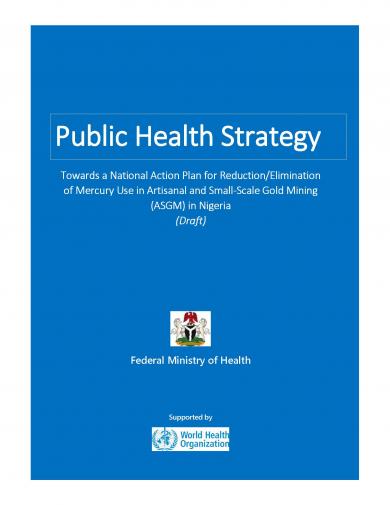
Public Health Strategyof the National Action Plan for Reduction/Elimination of Mercury Use in Artisanal & Small Scale Gold Mining (ASGM) in Nigeria
In 2013 Nigeria became a signatory to the Minamata Convention and the Article 7 of the convention highlights the need for reduction and elimination of Mercury. The Minamata Convention on Mercury is an international environmental treaty designed to protect human health and the environment from anthropogenic emissions and releases of mercury and mercury compounds (UNEP, 2013). Artisanal And Small-Scale Gold Mining (ASGM) sector is the highest source of mercury emission in the environment and this called for the development of the National Action Plan (NAP) on Mercury in Nigeria (Persaud & Telmer, 2015; Veiga, Maxson, & Hylander, 2006). Paragraph 3 (a) of article 7 of the Minamata Convention on Mercury obligates each Party that has more than insignificant ASGM in its territory to develop and implement a national action plan (NAP) in accordance with annex C to the Convention. A NAP must include a public health strategy on the exposure of artisanal and small-scale miners and their communities.
The World Health Assembly Resolution 67.11 recognizes the role of health ministries in supporting the implementation of the Convention and calls upon WHO to provide technical support in this regard. The Federal Ministry of Health (FMOH) has conducted public health and institutional assessments on ASGM, noted key findings and recommendations, staged a discourse with stakeholders and selected key priorities for implementation. A number of recommendations at different levels of intervention, i.e. individual, community and institutional level which emanated from the assessments conducted by FMOH guided the selection of public health interventions within this NAP.


